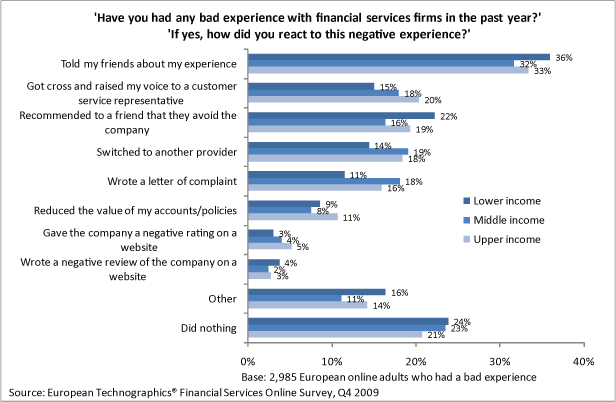The Data Digest: How Do Consumers Respond To Bad Customer Service?
To assess the state of customer experience in 2011, Forrester asked more than 7,700 US consumers in our Technographics© survey about their interactions with a variety of companies. Based on their responses, we calculated Customer Experience Index (CxPi) scores for 154 brands in 13 industries (for a detailed explanation on how the index works, read this post).
The most important finding was that for almost two-thirds of the brands in our study, their customer experience ranges from just “OK” to “very poor”. In fact, 35% of scores fell into the undifferentiated “OK” range — our most heavily populated bracket and not a good place to be if you want your brand to stand out from competitors. Only 6% of firms ended up in the “excellent” category, down from 10% of the brands in last year’s report.
What this tells us is that mediocre-to-bad customer experience is the norm, and great customer experience is really hard to find. But why does this matter? Because the old adage “A customer who gets good service will tell one person, yet a customer who gets bad service will tell 10 people” is very true. Another Forrester study shows that about one in three financial customers with a bad experience tells her friends, about one in five recommends that her friends avoid that given company, and one in 10 reduces their value of her accounts.

Some companies made an impressive jump in their scores in the past year. Their secret? Defining a customer experience strategy (and subsequently executing on it). This customer experience strategy needs to describe the intended experience, direct activities and processes needed to deliver the experience, and guide the allocation of resources required to support the experience. Only organizations that value their customers truly and build their organization around their customers’ needs will deliver an “excellent” experience.